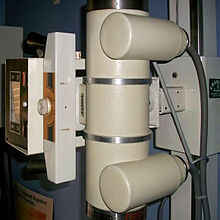Chiropractic controversy and criticism
[3][4] Internal divisions between "straights," who adhere strictly to Palmer’s original philosophy, and "mixers," who incorporate broader medical practices, have further complicated the profession’s identity.
[4] A 2003 profession-wide survey found "most chiropractors (whether 'straights' or 'mixers') still hold views of Innate Intelligence and of the cause and cure of disease (not just back pain) consistent with those of the Palmers".
[9][10][11] Scientific studies have generally found limited evidence for chiropractic efficacy beyond back pain, and concerns about patient safety, particularly with neck manipulations, have been raised.
[12][13][14] Legal battles, including the landmark Wilk v. AMA case and Simon Singh’s libel suit, highlight tensions between chiropractors and mainstream medicine.
[3] A 2003 profession-wide survey found:[5]most chiropractors (whether "straights" or "mixers") still hold views of Innate and of the cause and cure of disease (not just back pain) consistent with those of the Palmers.
On one hand, modern promotional brochures make a bid for medical legitimacy by describing Innate and adjustments using more scientific-sounding terms such as "inherent" and "nerve force.
In 1891–92, a city business directory stated: "Dr. Palmer can cure with his Magnetic Hands Diseases of the Head, Throat, Heart, Lungs, Stomach, Liver, Spleen, Kidneys, Nerves, and Muscles, ten times quicker than any one can with medicines.
[3] It has two main groups: "straights", now the minority, emphasize vitalism, innate intelligence and spinal adjustments, and consider subluxations to be the leading cause of all disease; "mixers" are more open to mainstream and alternative medical techniques such as exercise, massage, nutritional supplements, and acupuncture.
Chiropractors, including Palmer, faced frequent legal battles, leading to efforts to reframe chiropractic as a religious practice to circumvent medical licensing laws.
In 1966 a policy passed by the AMA House of Delegates stating:[39]It is the position of the medical profession that chiropractic is an unscientific cult whose practitioners lack the necessary training and background to diagnose and treat human disease.
[3] Serious research to test chiropractic theories did not begin until the 1970s, and is continuing to be hampered by antiscientific and pseudoscientific ideas that sustained the profession in its long battle with organized medicine.
By the mid-1990s there was a growing scholarly interest in chiropractic, which helped efforts to improve service quality and establish clinical guidelines that recommended manual therapies for acute low back pain.
[52] While many patients report positive experiences, surveys consistently rank chiropractors lower in perceived honesty and ethical standards compared to other healthcare providers.
[52] According to a 2006 Gallup Poll of U.S. adults, when asked how they would "rate the honesty and ethical standards of people in these different fields", chiropractic compared unfavorably with mainstream medicine.
In its early days, the accusation of quackery was voiced in a 1913 editorial in the Journal of the American Medical Association:[60] (p. 29)Chiropractic is a freak offshoot from osteopathy.
I dare say that health misinformation (if not quackery) can be found in just about any issue of any chiropractic trade publication (and some of our research journals) and much of the promotional materials chiropractors disseminate to patients.
Practitioners use unscientific practices and deception on a public who, lacking complex health-care knowledge, must rely upon the trustworthiness of providers.
Claims not supported by solid evidence were made about asthma, ear infection, earache, otitis media, and neck pain.
A representative from the NZ Chiropractic Board states that entries in the Yellow Pages under the heading of "Chiropractors" fulfills this obligation when suitably qualified.
[68] This situation, coupled with a backlash to the libel suit filed against Simon Singh, has inspired the filing of formal complaints of false advertising against more than 500 individual chiropractors within one 24-hour period,[69][70] prompting the McTimoney Chiropractic Association to write to its members advising them to remove leaflets that make claims about whiplash and colic from their practice, to be wary of new patients and telephone inquiries, and telling their members: "If you have a website, take it down now" and "Finally, we strongly suggest you do not discuss this with others, especially patients.
Singh wrote in The Guardian criticizing the claims made by chiropractors about the efficacy of spinal manipulation in treating childhood ailments, among other things.
He suggested there was "not a jot" of evidence to support such interventions for these ailments, and argued that the British Chiropractic Association "happily promotes bogus treatments".
Its founder, Stephen Barrett, has written that it is "absurd" to think that chiropractors are qualified to be primary care providers[82] and considers applied kinesiology to be pseudoscience.
[3][85] A 2008 review found that with the possible exception of chronic back pain, chiropractic manipulation has not been shown to be effective for any medical condition.
[11] A 2010 systematic review found that numerous deaths since 1934 have been recorded after chiropractic neck manipulation typically associated with vertebral artery dissection.
[93][12][13][14] A growing number of chiropractors advocate for aligning the profession with scientific standards, focusing on neuromusculoskeletal care and collaborating with mainstream healthcare providers.
[95] Research suggests that radiology instruction given at chiropractic schools worldwide is evidence-based, but that radiography is overused for low back pain.
The chiropractic concept of Innate Intelligence is an anachronistic holdover from a time when insufficient scientific understanding existed to explain human physiological processes.
"[97] Chiropractic historian Joseph C. Keating Jr. articulated that "So long as we propound the "One cause, one cure" rhetoric of Innate, we should expect to be met by ridicule from the wider health science community.
Chiropractors regularly introduce bills into state legislatures to further prohibit non-chiropractors from performing SM, and they are opposed by physical therapist organizations.


